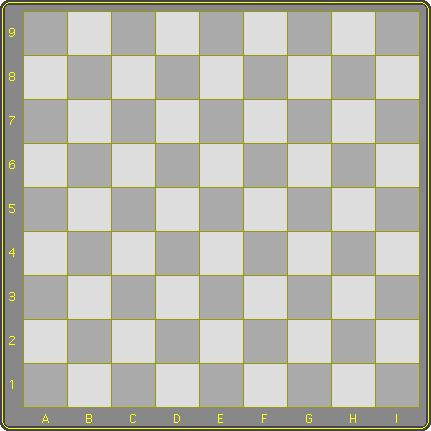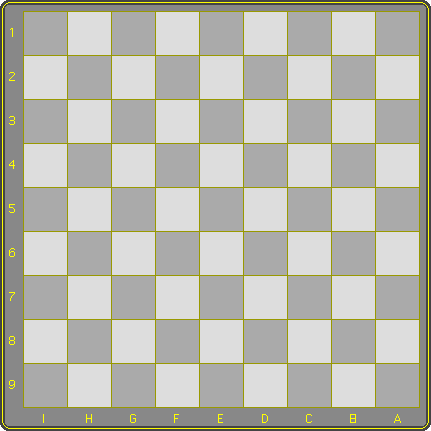The idea for Rotary came from Ploy, a proprietary game (3M) in the seventies. In the past, the market has provided some good examples of bad abstract strategy games and Ploy, invented by Frank Thibault, was one of them. Eventually it disappeared of course. You can fool all people sometimes, and some people all the time, but you can't fool all people all the time.
Ploy is a chess variant with 'rotational' pieces and no pawns. Each player has one 'commander, six 'lances', five 'probes' and three 'shields'. These pieces have arrows on top indicating the directions in which they may move. Instead of moving a piece may rotate to a different direction. Shields may move and rotate (in that order) in the same turn.
Pieces have a limited scope: they may move as many spaces as they have directions to move in. That's the first indication something may go wrong. Coupling 'strength' with 'scope' is positive feedback. Positive feedback creates imbalance.
It's not necessarily wrong. In Focus 'scope' is coupled with a column's height. But in Focus the column must move precisely as far as it is high, not 'up to and including'. This restricts positive feedback. Focus is quite volatile, but not imbalanced.
Frank Thibault however was so blatantly unaware that he was going down the wrong track, that he actually increased the dubious effects of his coupling by allowing six lances, able to move up to three squares in three directions, but only three shields, able to move one square in one direction, albeit with the right to rotate in the same turn. What the hell are these guys doing there? It's like having six pitbulls to fight with, and, to make sure, three pekingese.
So I did a better job with Rotary. And it wasn't too difficult either. I needed a couple of minutes. A complete and consistent set presented itself so emphatically that it would have been hard to miss.
|
The mechanism by nature is very capricious, so I transposed regular Chess pawns to provide a strategical framework.
 | Rules The diagram shows the Rotary board with the pieces in their initial position.
|
 | The right to rotate stationary makes stalemate an impossibility. Another unique and implicit feature is that a king may give check, even deliver mate (as shown) to its counterpart. |
The pieces follow a logical sequence. All are subject to the following rules:
- A piece may, at the cost of a turn, rotate on its place, provided this effectuates a change in orientation.
- A piece may move one square in any of its directions and rotate, but only after the move, as part of the same turn.
- A piece may move any distance in any of its directions, but if it moves more than one square, it loses the right to rotate in the same turn. The only exception is the Scythe that has the right to rotate in the same turn regardless of the length of its move.
|
Strategy
The strategic implications of the pawn structure differ little from Chess. Apart from this, it is difficult calculate deep in the game's rather capricious tactics, and in consequence also to make a specific overall plan.
The pieces are of roughly equal strength, but differ rather dramatically in timing. The forward oriented Axe, for instance, has no immediate possibility for retreat, so its encounter with an opponent's pawn structure should be avoided. The Axe usually becomes active in the later stages of the game when the number of pawns has reached safer levels.
The Rook, to a lesser degree, encounters the same problems. The best orientation is usually with its middle direction obliquely forward or even sideways, to ensure the possibility of a retreat.
The Trident can be brought into play in an earlier stage. Its directions are rather roundabout ensuring a greater flexibility.
The Scythe is the opening piece par excellence. Its greatest joy is penetrating behind the opponent's pawn structure and finding the pieces, from its opponent's point of view, in precisely the wrong orientation. The amount of havoc a Scythe can create in these circumstances is unbelievable!
An example game
| no Sound - Flip board | ||
|
to move
|
|
|
|
Anonymous
|
||
How I invented … Rotary
External links
Rotary © MindSports











































































